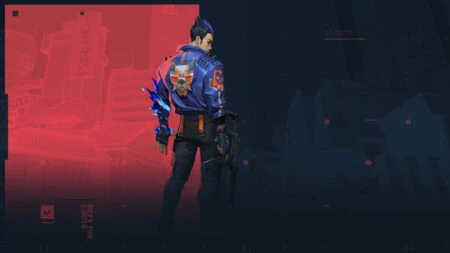The Yoru rework we’ve all been waiting for is here at last. When the Japanese duelist was first released on Valorant in January 2021, his deception-based kit promised to shake up the game with creative ways to mislead opponents and get the first kill.
But soon the consensus was clear. Yoru had too many sound cues. His fake footsteps didn’t do a great job of tricking anyone. And his teleport ability had a big window of vulnerability at both ends. Even after the buff to his Blindside flash and Gatecrash teleport in patch 2.06, he continued to see the lowest pick rate in both ranked matches and pro games.
In response, Riot Games announced plans for a complete Yoru rework last December, with significant improvements to his ability to trick and deceive enemies. Now, in Riot’s latest State of the Agents blog, we finally have more details about the changes and a long-awaited release date — the Yoru rework will arrive in Episode 4 Act II, and he’s looking like a brand new man.
What changes does the Yoru rework bring?
Riot has a good track record of balancing agents to bring them into the meta. Its Viper buffs last year turned her into one of the strongest controllers in the game, and she is now an incredibly strong pick on maps like Breeze, Icebox, and Bind.
The new Yoru changes look like they could finally help him find his place in Valorant’s meta, with more versatility and play-making potential added to his kit.
Dimensional Drift
This is the big one. Here’s a list of all the changes:
- Yoru is no longer revealed to enemies
- Yoru is able to cast all utility while in Dimensional Drift
- Enemies can hear Yoru’s footsteps
- Nearsighted is removed
- Unequip delay time is increased slightly
- Cast delay added when casting Dimensional Drift, preventing invulnerability frame on cast
Yoru’s ultimate can now do far more than just scout the enemy’s location, and he is in a good position to help his team set up a play with the ability to flash, push enemies off angles, and set down a teleport. And with full vision of the site, he can gather information on the enemy backline more easily.
Riot also took steps to fix some of the “unintended play patterns that have shown up in-game”. The longer unequip time means you can no longer surprise enemy players with the Shorty immediately after exiting your ultimate.
Similarly, the cast delay stops you from running around with Yoru’s mask and “jamming it on at the first sight of danger”.
- Killjoy is not actually a fan of NFTs, says Riot Games
- Riot teases progress of mobile FPS game with Valorant Mobile job listings
Fakeout
Instead of red footsteps, Fakeout is now a carbon copy of Yoru. It runs forward and explodes and debuffs enemies when destroyed.
There’s a new twist to it though. When the copy is shot, it faces the direction of the player that shot it and flashes toward them in a “conal direction”. Unlike his regular Blindside ability, this flash has a narrower area of effect, so teammates or enemy agents behind or to the side are not affected.
These changes mean that Fakeout is now finally an effective decoy. Unlike the previous footsteps, this will actually make enemy agents think twice when you send it forward onto a site.
To ensure that Yoru’s teammates aren’t confused by his decoy, they will see a different character design that clearly sets the two apart.
Gatecrash
The new Gatecrash lowers the range at which enemies can see and hear the tether, and it now moves 20% faster. Yoru can also trigger a fake teleport, which will play the same audio and visual cues as the real one.
Since its last update, Riot has added a new “puddle” visual that’s left on the ground after a fake teleport. This is to help enemy players confirm whether the real Yoru is around, or if it was a misdirection.
While Riot says the goal of the fake teleport is to create confusion about Yoru’s location, it still wanted players to be able to understand what happened at the location of the fake teleport.
The Yoru rework release date has been set for Episode 4 Act II
The changes will go live in Valorant’s Episode 4 Act II, which is expected to start on March 1.
The updates to the interdimensional duelist could help make him a far more viable agent in the Valorant meta. “Yoru can now see the battlefield unhindered, allowing him to enter enemy zones, take in the state of the map, and mastermind a play,” says Riot.
Either way, the rework looks promising, and it might be exactly what Yoru needs to live up to his potential as a master of deception.
READ MORE: The 5 best plays from VCT NA Stage 1 Challengers Open Qualifier 2

